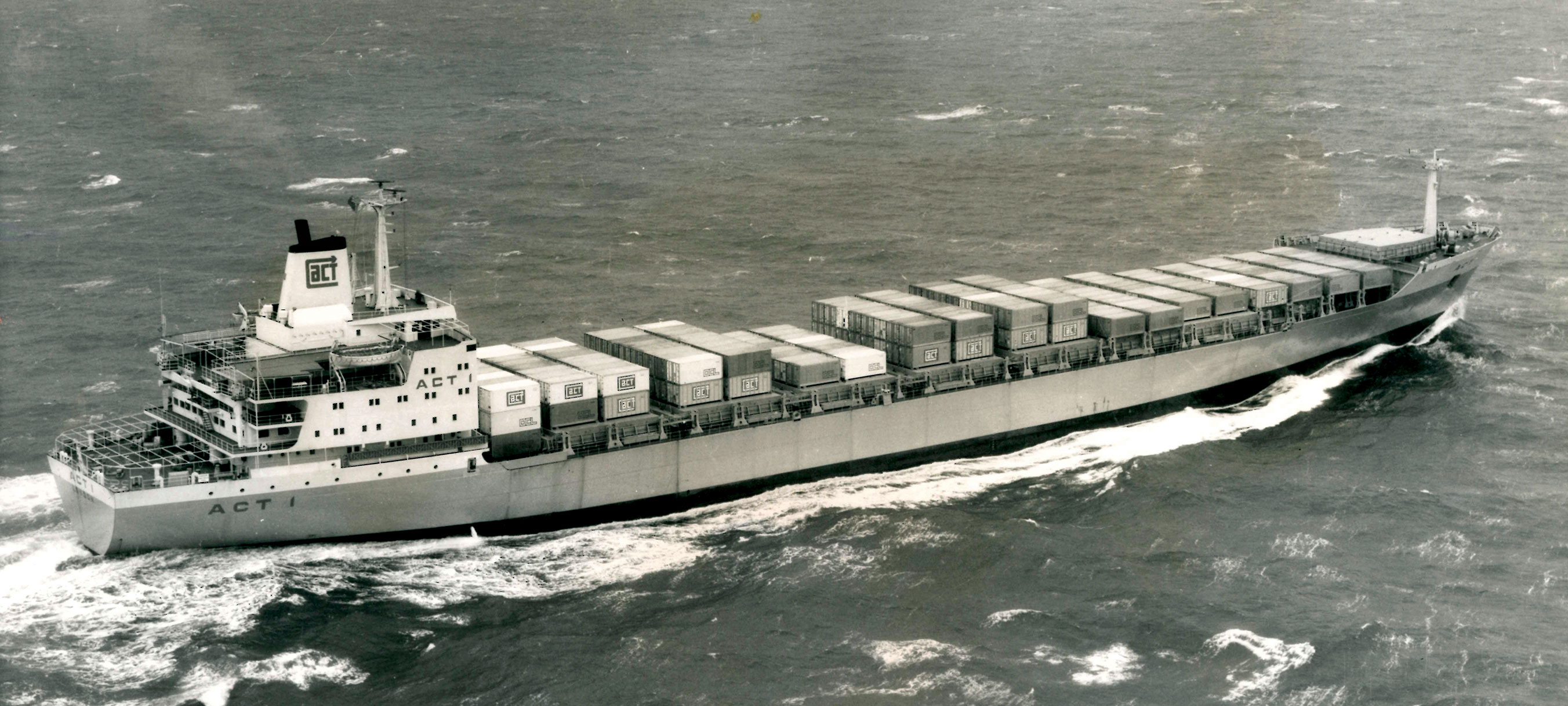
By the mid-1960s, containers were starting to radically re-shape traditional cargo shipping operations, and the containership ACT 1 was one of the vessels in the vanguard of the UK industry's response to developments. By Andrew Linington
By the mid-1960s, containers were starting to radically re-shape traditional cargo shipping operations, and the containership ACT 1 was one of the vessels in the vanguard of the UK industry's response to developments.
The first containerships had been converted from tankers, but in 1968 United States Lines had introduced the first purpose-built vessels, the C7 Lancer Class. In 1967, Atlantic Container Line introduced its G1 ships – including the UK-flagged Atlantic Star – to bring containerisation to the transatlantic services.
British shipping companies were determined to rise to the challenge and in 1965, four of the UK's largest liner companies – P&O, Blue Funnel, British & Commonwealth, and Furness Withy – joined forces to launch Overseas Containers Limited (OCL).
Early in the following year, five other British shipping companies – Ben Line, Blue Star Line, Cunard (Port Line), Ellerman Lines and Harrison Line – formed a rival to OCL, Associated Container Transport (ACT).
ACT (Australia) was established in 1967 by Blue Star, Ellerman and Port Line, who ordered three 1,130TEU vessels for the containerisation of services between Europe, Australia and New Zealand. The three ACT ships were designed to run in collaboration with five OCL vessels on what was known as the Australia Europe Container Service, a consortium which also included Nedlloyd, Hapag-Lloyd, Messageries Maritimes, and the Australian National Line.

ACT 1 was one of the world's first purpose-built containerships. Right from the start, the Union raised concerns about the impact of the new service on crews
ACT wanted a new type of ship to operate the service and calculated that one containership would replace five or six conventional cargo vessels. It reckoned that the new ships could unload, reload and return to sea within the space of three days – helping to reduce door-to-door consignment times between the UK and Australia by anything from 10 to 20 days.
ACT 1 was designed to operate with a crew of 24, and before its launch the Nautilus predecessor union MNAOA raised a number of issues with the owners, including the social aspects of the service, the quick turn-rounds and leave arrangements.
ACT 1 was narrowly beaten by OCL's Encounter Bay to launch the service and to become the first fully purpose-built containership for international trades. Encounter Bay's maiden voyage from Rotterdam to Fremantle in March 1969 came just one month before ACT 1's introduction.
Built by Bremer-Vulkan, in Vegesack, Germany, ACT 1 was of 24,821gt and 217.25m loa. The single-screw ship was powered by two Stal Laval steam turbines, with a power rating of 20,000shp (14,711 KW) and a service speed of 22 knots, later reduced to 19.5 knots. Cargo capacity included 454 refrigerated containers.
The relentless pace of consolidation saw ACT 1 acquired by P&O Containers in 1991, when it bought Cunard-Ellerman's container shipping interest. The ship was renamed Discovery Bay and continued to operate for P&OCL and P&O Nedlloyd until September 1998 when, following a series of boiler problems, it was sold in Singapore and sent to India to be broken up at Alang.
Tags
